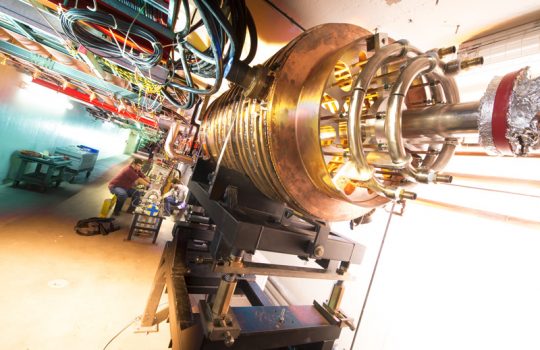From MeteoWeb, March 18, 2019: Si è tenuta il 15 marzo al Fermilab, negli Stati Uniti, la cerimonia di posa della prima pietra di uno dei più importanti progetti per il futuro della fisica, in cui l’Italia porta un contributo tecnologico e scientifico di primo piano. Si tratta del progetto PIP-II per la realizzazione di un nuovo acceleratore lineare superconduttore, lungo 215 metri: una delle macchine più avanzate per la ricerca in fisica fondamentale che avrà il compito di produrre il fascio di neutrini di alta energia più potente del mondo per il progetto DUNE.





